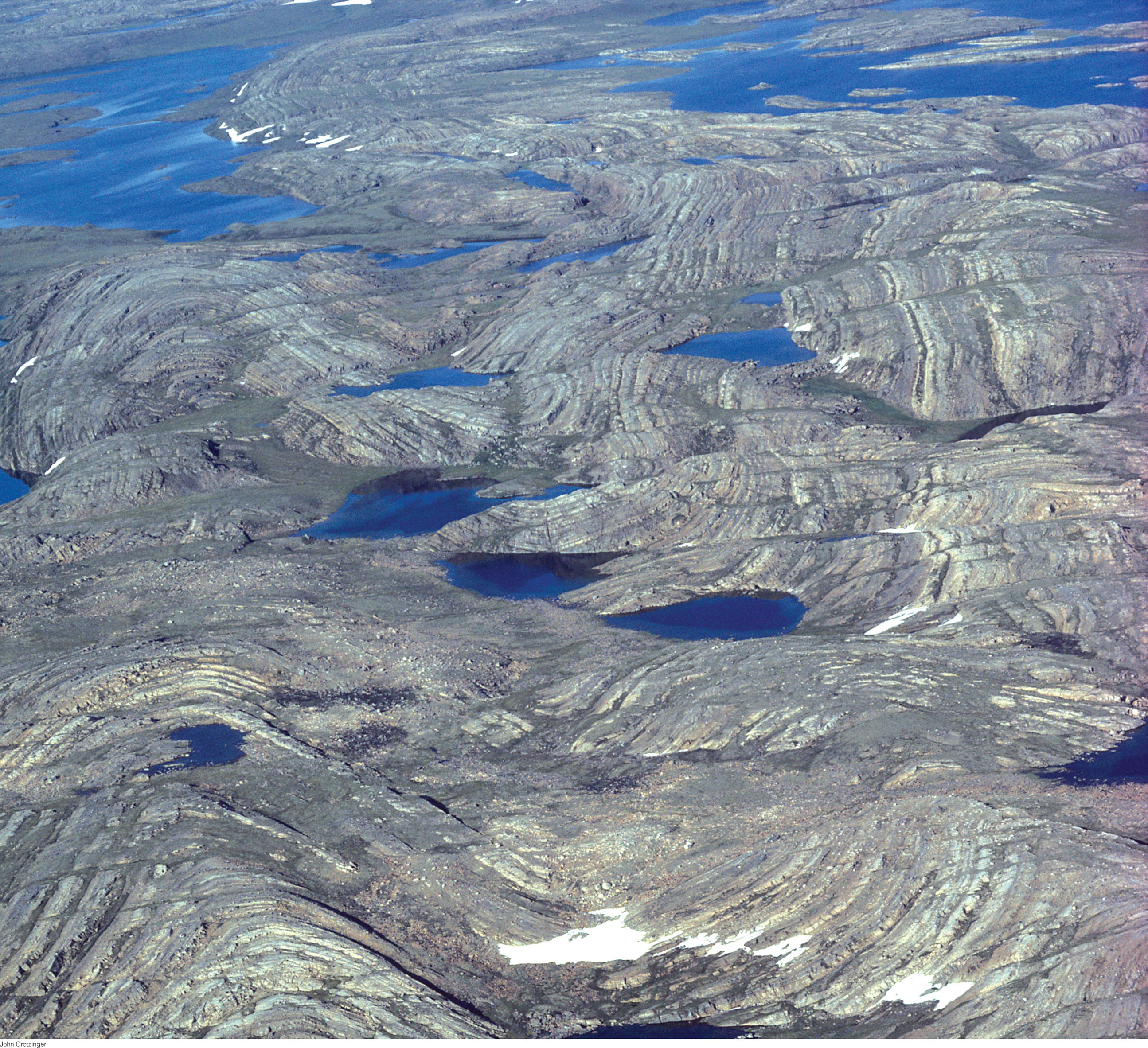170

DEFORMATION: MODIFICATION OF ROCKS BY FOLDING AND FRACTURING
 Plate Tectonic Forces 172
Plate Tectonic Forces 172 Mapping Geologic Structure 172
Mapping Geologic Structure 172 How Rocks Deform 175
How Rocks Deform 175 Basic Deformation Structures 177
Basic Deformation Structures 177 Styles of Continental Deformation 184
Styles of Continental Deformation 184 Unraveling Geologic History 188
Unraveling Geologic History 188
171
WHEN ROCKS ARE CAUGHT UP IN PLATE BOUNDARIES, their textures and mineralogy can be transformed by metamorphism, as we saw in Chapter 6. Among the processes that cause regional metamorphism in continents, the most important is deformation: the modification of rocks by squeezing, stretching, folding, and faulting. On the scale of individual rocks, deformation can change granites into gneisses and sediments into schists. On a large scale, deformation can distort layers of sediments, which were deposited almost horizontally, into crazy-looking patterns.
Early geologists understood that most sedimentary rocks had originally been deposited as soft horizontal layers at the bottom of the ocean and had hardened over time. But what forces could have acted on these rocks, which seemed so strong and rigid, to produce the patterns they observed? Why were particular patterns of deformation repeated time and time again throughout geologic history? The discovery of plate tectonics in the 1960s provided the answers.
This chapter describes how rocks can be tilted, bent, and fractured into the patterns we see at the land surface. It concentrates on the processes of folding and faulting that deform continental rocks near plate boundaries. It shows how geologists collect and interpret field observations to make geologic maps, and then explores what those maps can tell us about the history of deformation, as well as the tectonic forces that caused it.
172